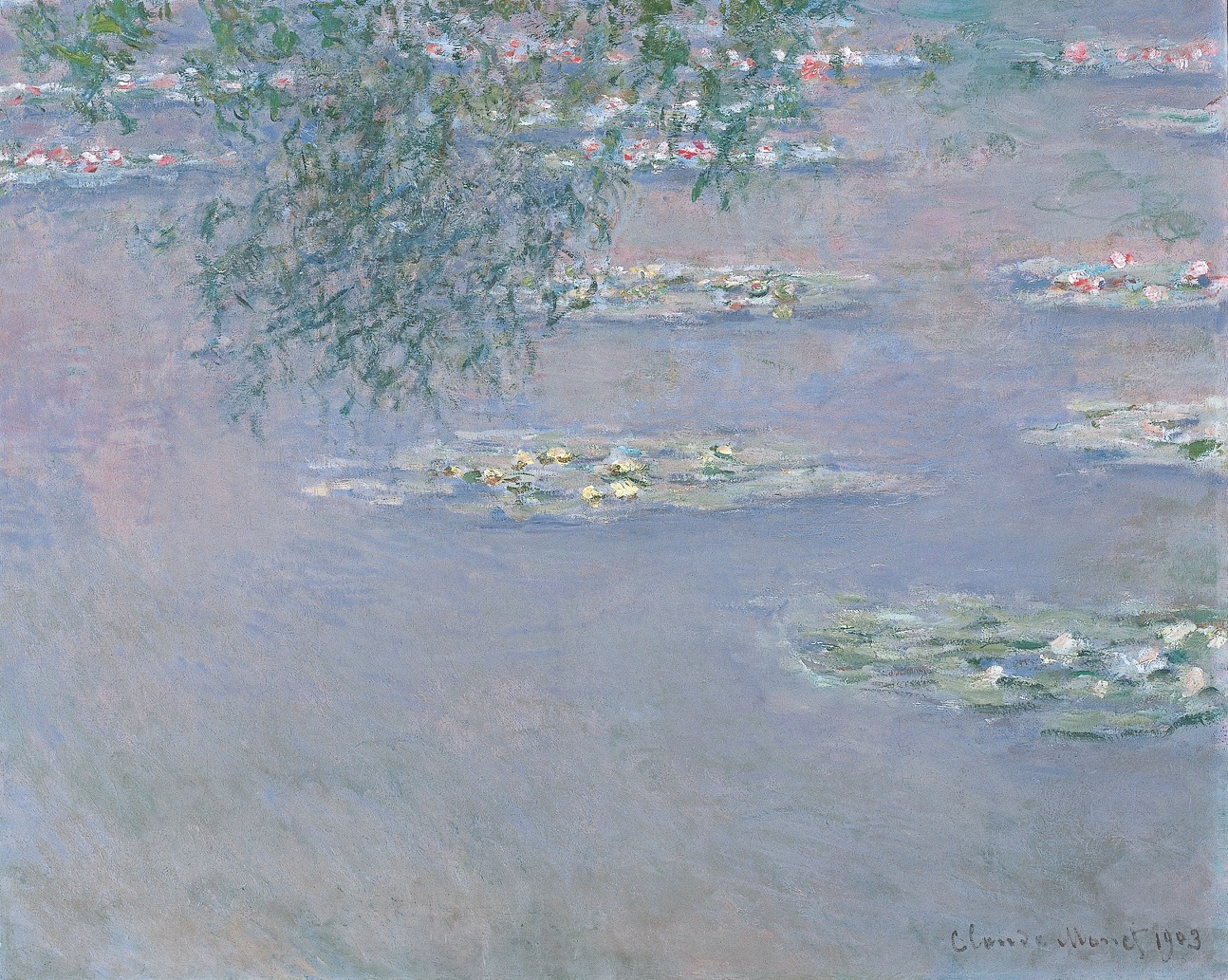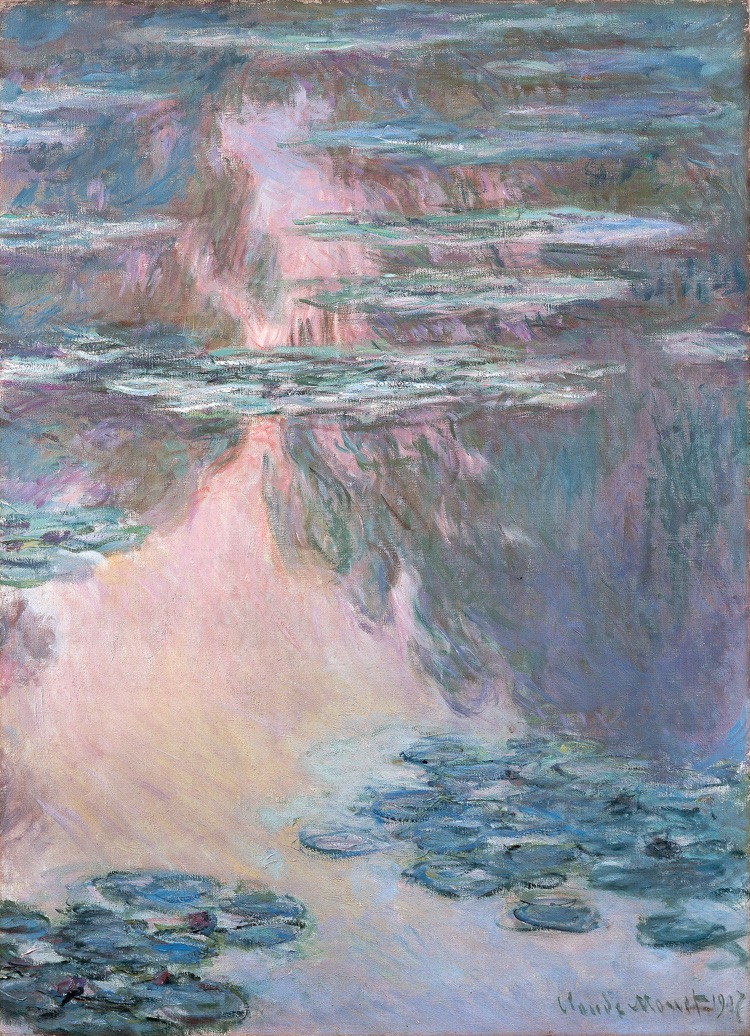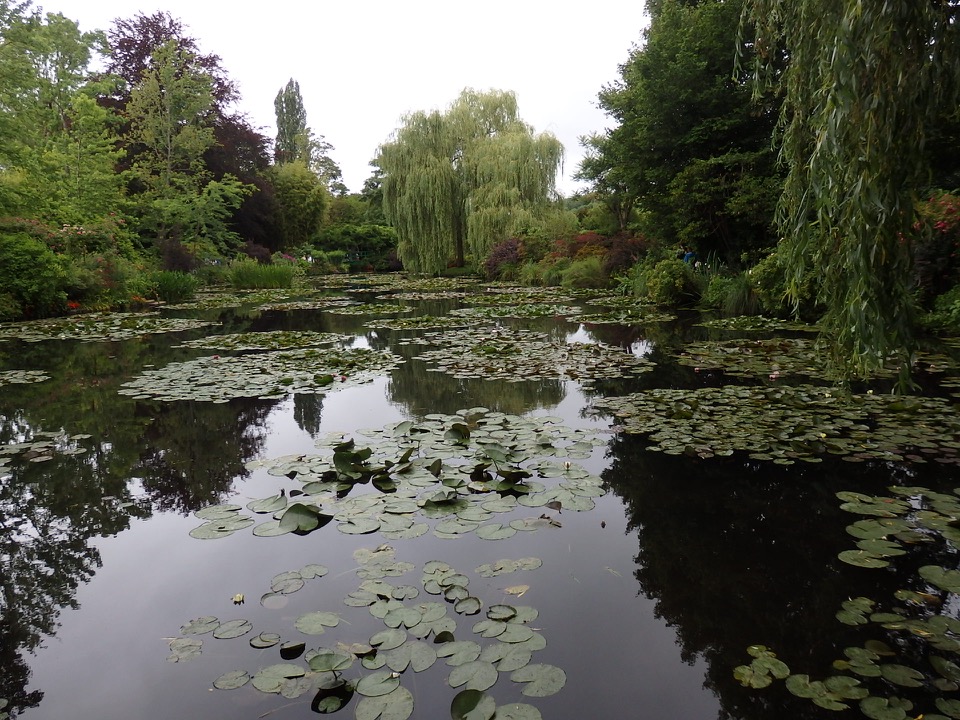In 1883, Claude Monet (1840-1926) moved from Paris to Giverny, nearly eighty kilometers downstream on the River Seine northwest of Paris. He loved this rustic village still untouched by modernity. In 1889, he purchased the house and land that he had been renting and became passionately involved in creating a garden there. After creating his "Flower Garden," in which he planted seasonal flowers, in 1893, he purchased additional land across the road and constructed his "Water Garden," organized around a lily pond. In the pond he planted water lilies, while around it he planted iris, willows, and peonies. The arched bridge covered with wisteria embodied his interest in Japanese arts.

Monet began in earnest to paint the water lilies in 1899 as he was about to turn sixty. In 1900, he showed his first series of them, 26 works in which he painted the water lilies blooming in the pond with the willows and other plants around them. All of these paintings have the same composition, with the arched bridge in the background. They differed in the hues seen in the light reflected from the water's surface. Later, after the pond was enlarged, Monet painted a second series. Once again our eyes are drawn to the water's surface, which now fills the frame. When we look at Water Lilies, except for the willow branches glimpsed in the upper left, the entire surface is covered by water lilies in full bloom. In Water Lily Pond, the depiction of the lilies is simplified; the protagonists that take center stage are the light from the sky and the trees reflected on the water's surface.
The words with which we began appear in a letter to the art journalist-critic Gustave Geffrey concerning the preparations for Monet's solo exhibition, The Water Lilies, Series of Water Landscapes. This exhibition included forty-eight works from the second series of water lily paintings produced between 1903 and 1908. With the whole series displayed in sequence, they seemed to form a single continuous surface. The concept of using the Water Lilies masterpieces to fill a single room was so successful that it was retained for the Water Lilies Room in the Musée de l'Orangerie in Paris.
Curator:Kaori Hosoya













The landscapes of water and reflections have become an obsession. It is beyond my old man’s powers, but nevertheless I want to render what I sense.
from a letter to Gustave Geffroy, August 11, 1908.